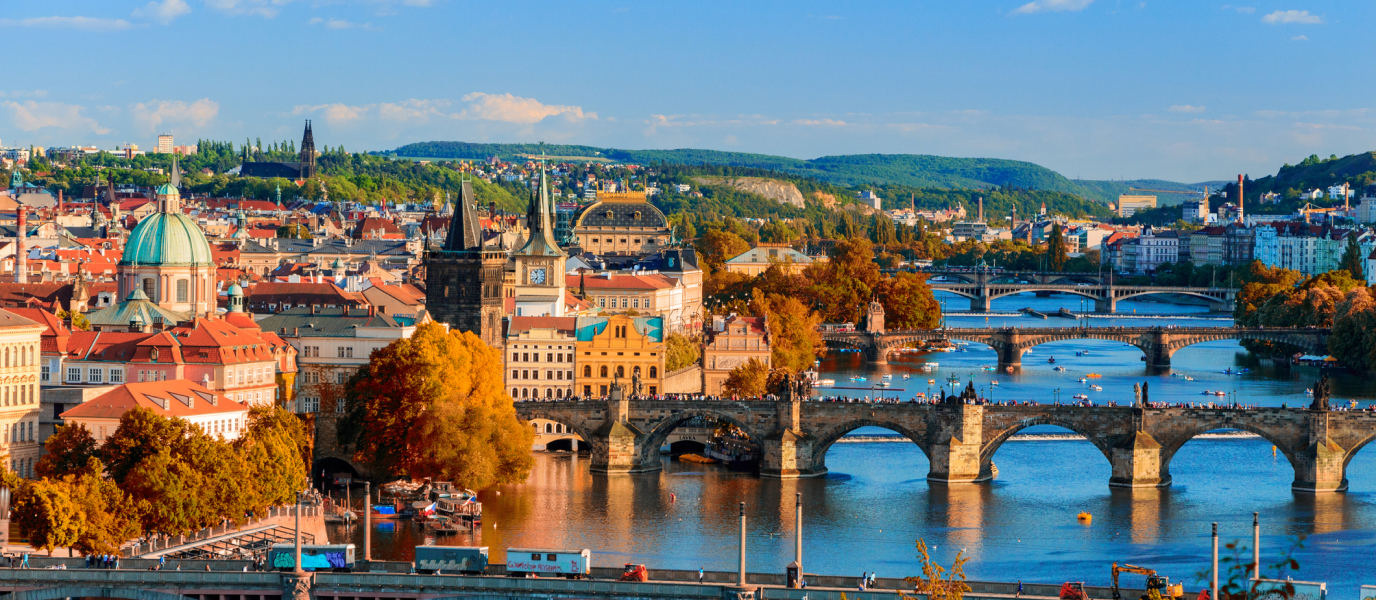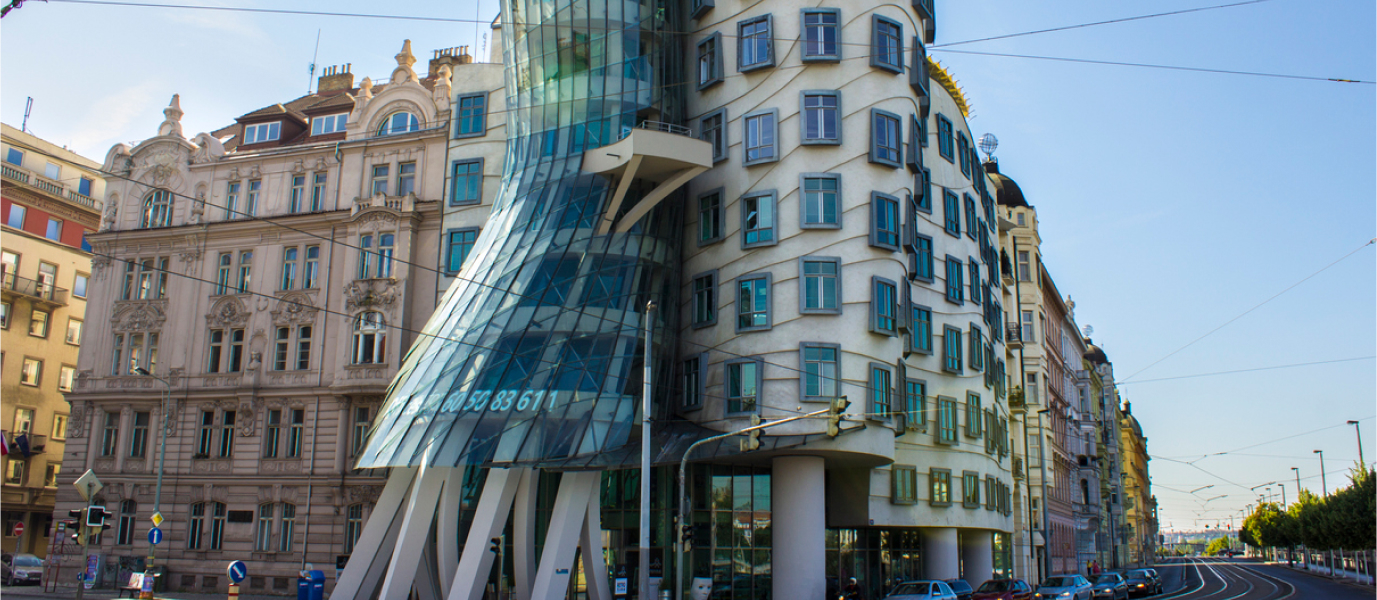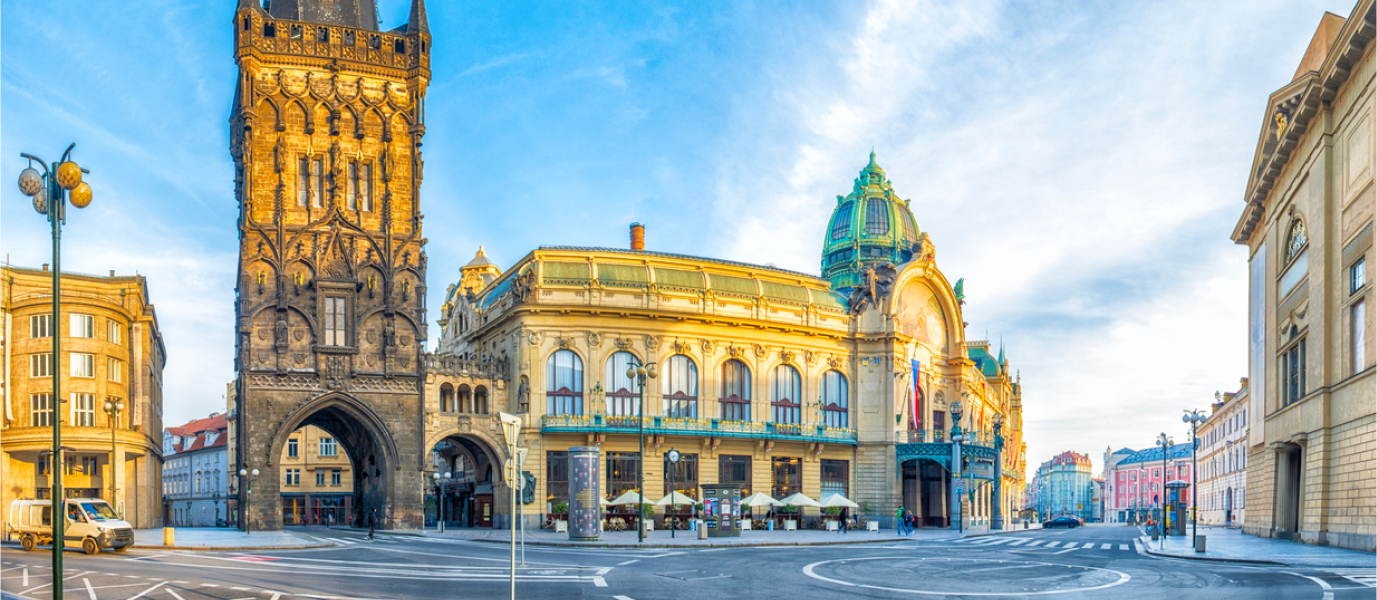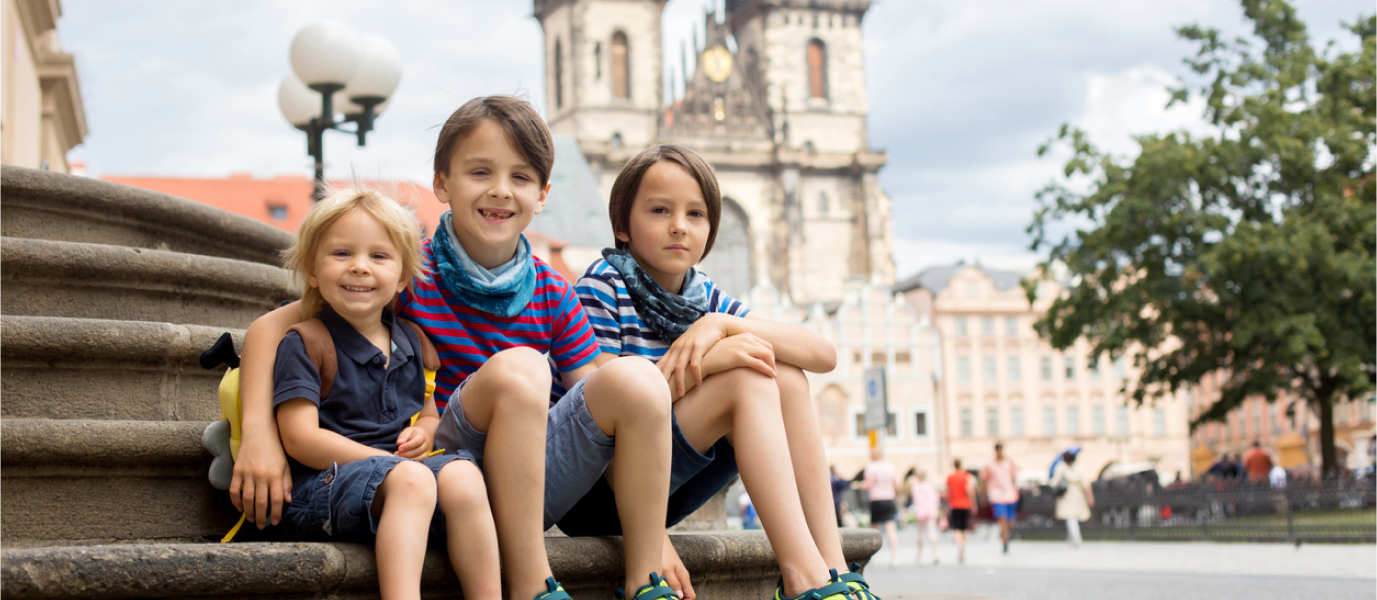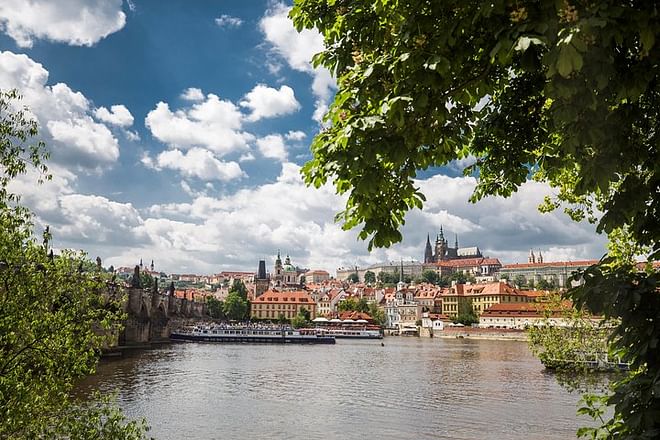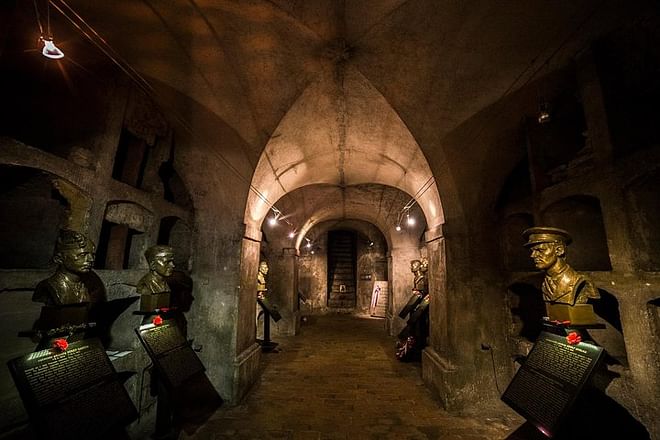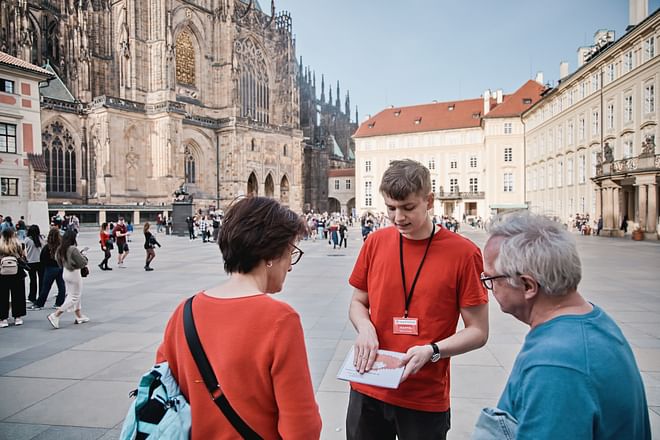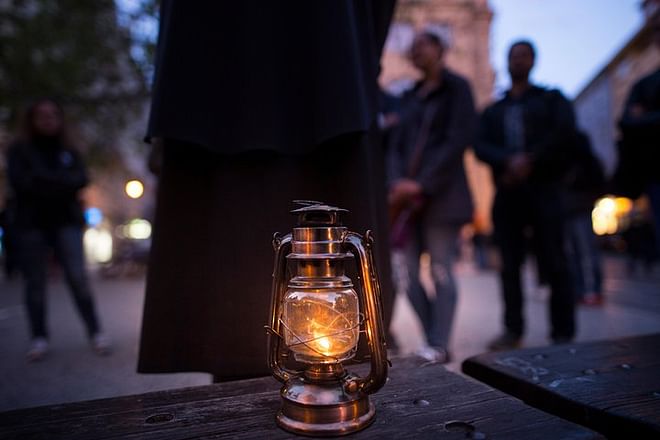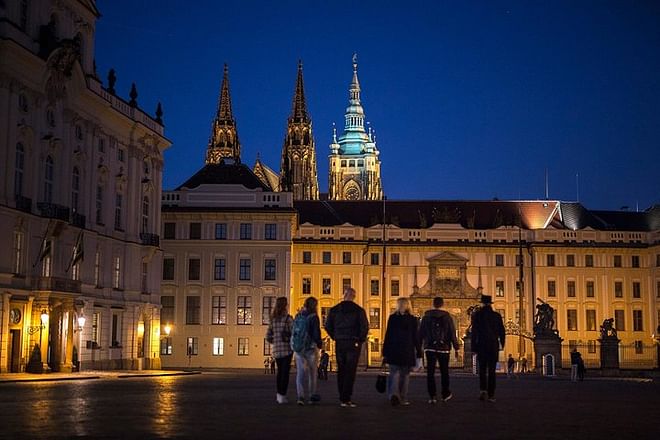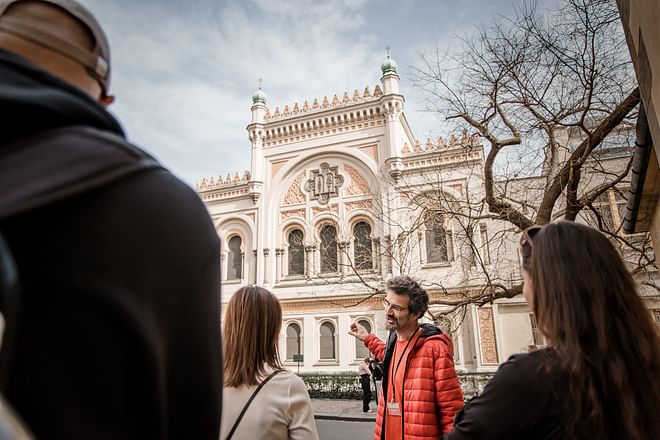The City of Prague, the point of arrival for most travellers to the Czech Republic, is everything a lover of culture and history could wish. The street life in some parts, such as the Old Town Square, is astonishingly vibrant, while others like the Jewish Quarter are steeped in history; the city has cathedrals, fortresses, streets of goldsmiths’ workshops (inside Prague Castle), and lively bars serving the finest beer.
If you still haven’t found a compelling reason to visit Prague, read on to find out about the Czech capital’s finest historical monuments and about the activities you can enjoy there. A trip to the Czech Republic, beginning with Prague, will be packed with unforgettable experiences.
PLACES YOU MUST SEE IN PRAGUE
The sightseeing visits that will interest you depend on the kind of person you are, as of course our individual tastes will dictate what we want to see in Prague. However, if we start with the architectural and cultural highlights of this so-called ‘City of a thousand towers’, we can bear in mind the following recommendations:
1. Old Town Square and Clock Tower
One of the first places on the itinerary of most visitors to Prague is the Old Town Square, which dates from the twelfth century. Not only is it one of the oldest squares, but it also contains great monuments such as the Old Town Hall, the Church of Our Lady of Tyn, the Kinsky Palace, and the Stone Bell House.
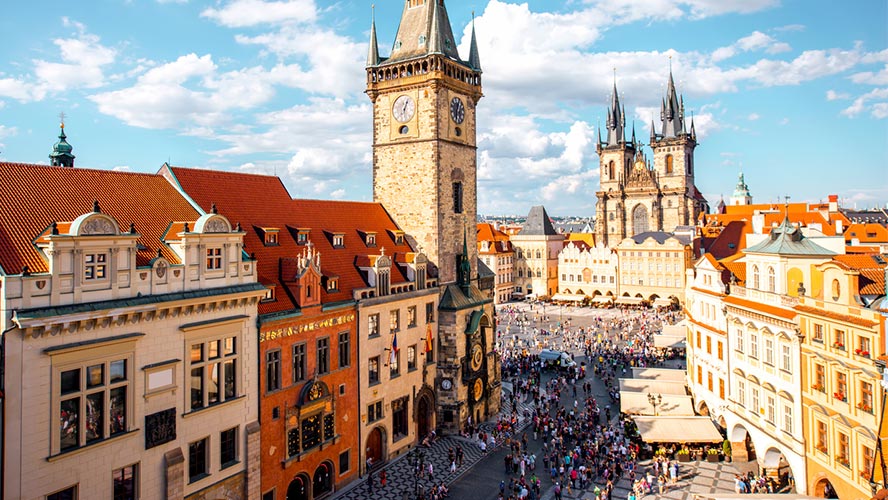
These are all very important monuments, but if there’s one place in this square that no one wants to miss, it is the fifteenth-century Astronomical Clock housed in the Town Hall Clock Tower. Every hour on the hour, a large crowd gathers in front of these huge spheres to witness the procession of clockwork apostles and other figures including Death and Greed.
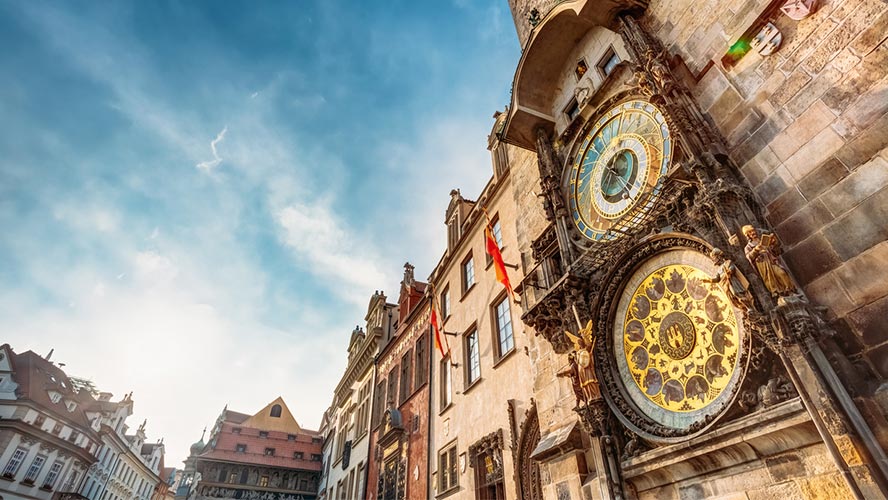
2. The monumental Charles Bridge
This is one of the best-known images of Prague, and one of the places most tourists visit first. Charles Bridge, is one of Prague’s oldest bridges, built on the orders of Charles IV (hence its name). Although work began in 1357 and did not finish until 1402, this monumental marvel was well worth the wait. The sides of the bridge are decorated with 30 magnificent sculptures of saints, added between the seventeenth and twentieth centuries. Look carefully at the gate at one of the entrances, because it is a wonder of Gothic design and craftsmanship.
At sunset or after rain is the best time to take photographs. If you want photos with no one else in them, you’ll need to get up early: at 6.00 a.m., you’ll only see the odd jogger.
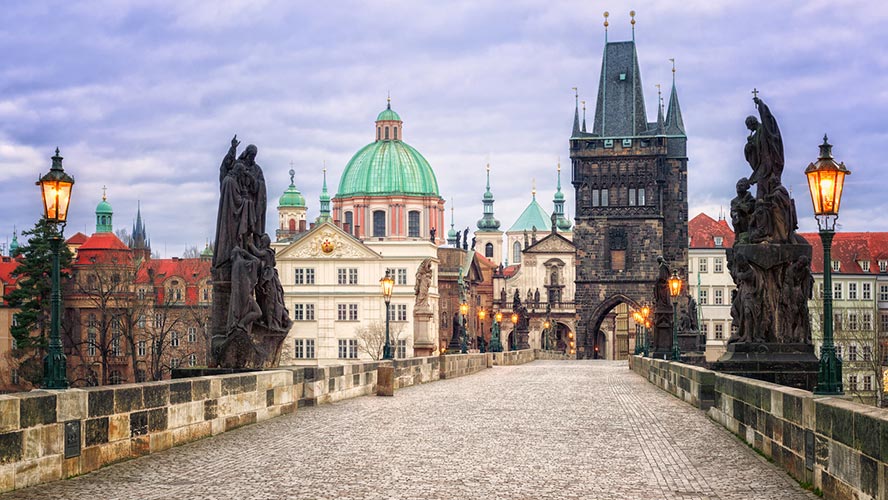
3. Prague Castle, a great fortress
If, when you think of a castle, you have a mental image of something out of Walt Disney, you can forget that — because Prague Castle is a citadel that houses St Vitus Cathedral, and the former royal palace, along with gardens and picturesque streets like Golden Lane. An unhurried tour of the Castle would take a full day. The castle was built in the eleventh century as a residence for the Czech royal family, although once Czechoslovakia became a republic it was occupied instead by the country’s presidents.
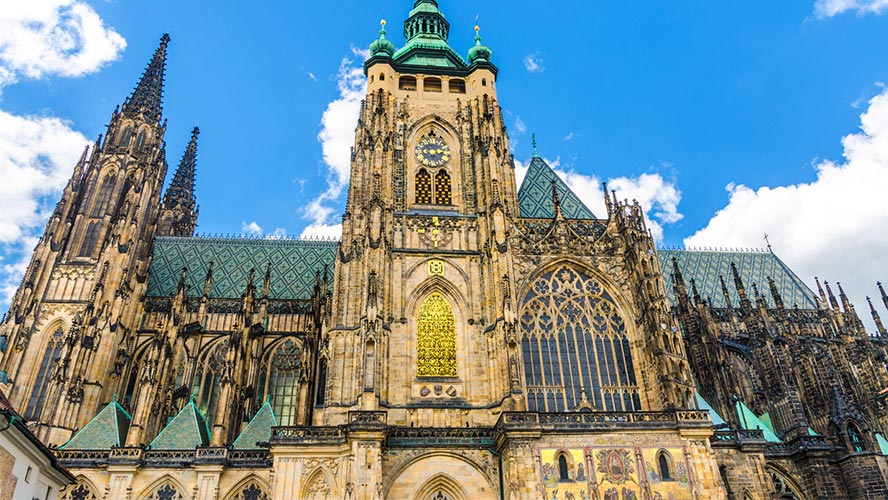
4. St Vitus Cathedral
The Cathedral of Saint Vitus,, Wenceslaus and Adalbert stands within the citadel of Prague Castle. It took six centuries to complete, as work began in 1344 and did not finish until 1929. Don’t limit yourself to admiring its Gothic style from outside — spend at least half an hour visiting the incredible Chapel of St Wenceslaus. This chapel is the final resting place of the cathedral’s patron saint, so it is lavishly decorated. Your visit should include the crypt, containing the tombs of the Czech monarchs, and the Crown Jewels in the Coronation Room.
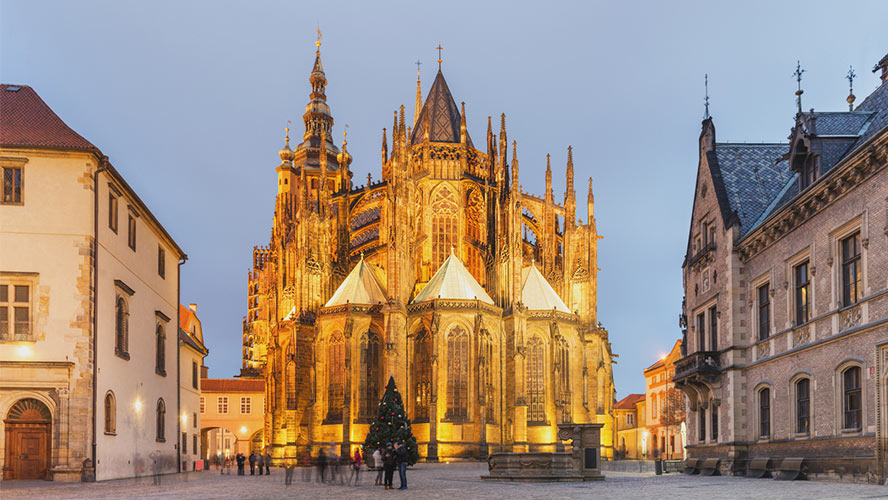
5. Golden Lane and Kafka’s house
This little street, situated between the White Tower and the Tower of Dalibor, is one of Prague Castle’s wonderful surprises. No one would expect to find here a row of colourful cottages like something out of a fairy tale. These little dwellings were built into the arches of the fortifications from the late sixteenth century onwards. This was home to Prague citizens until the Second World War, and included some famous residents: Franz Kafka for instance lived here, in number 22, for two years (1916 and 1917). The street’s name, Golden Lane, came about because a number of goldsmiths had their workshops here. Over time, the cottages were turned into souvenir shops.
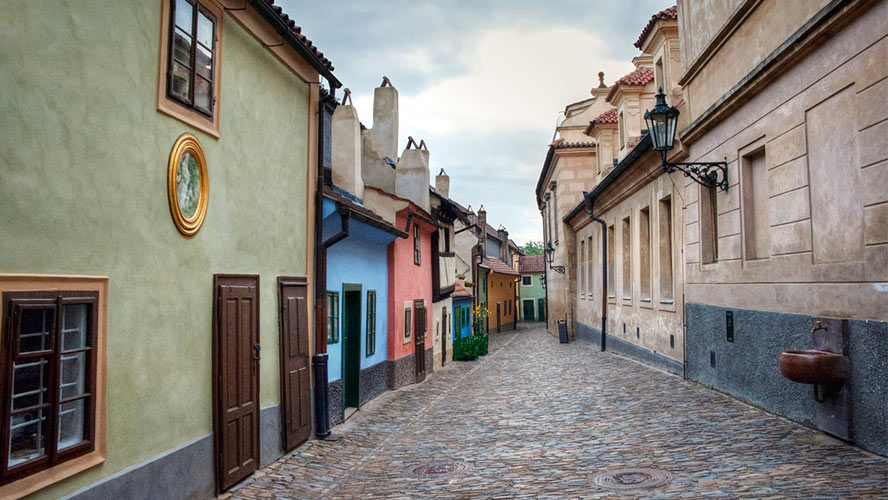
6. The Church of St. Nicholas and its immense cupola
A church with a dome the size of the one that sits atop the Church of St Nicholas cannot possibly go unnoticed. The cupola in question measures 20 metres in diameter, and has an interior height of 49 metres. The dome is the capital’s tallest. A visit to the Church of St. Nicholas is highly recommended if you are interested in seeing Prague’s Baroque architecture, and inside you can admire the frescoes by the Viennese artist Johann Lucas Kracker, and paintings by Karel Škréta. If your visit happens to coincide with a religious musical concert, make the most of the opportunity to enjoy the sound of the church’s seventeenth-century organ.
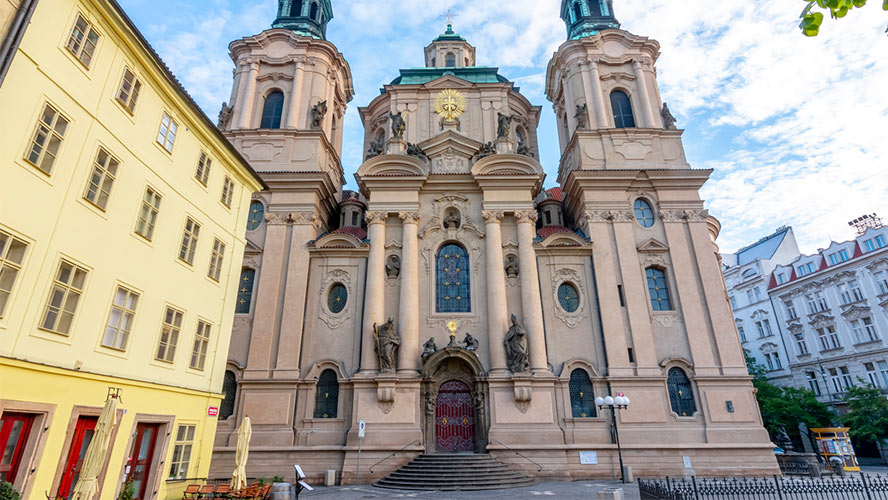
7. The Jewish Quarter, a testament to the past
Prague’s former Jewish enclave is one of the best preserved in Europe. This neighbourhood has 6 synagogues, a town hall and a cemetery. The latter presents an unforgettable scene with its grave stones and layered tombs piled up to varying heights. Apart from this strange burial ground, there are other places to see, such as the Old-New synagogue, steeped in the legend of the Golem; the Pinkas synagogue, which has the world’s longest epitaph on its wall; the Spanish synagogue, with its impressive interior ornamentation; and the Jewish Museum. This neighbourhood will give you a history lesson that you will never forget.
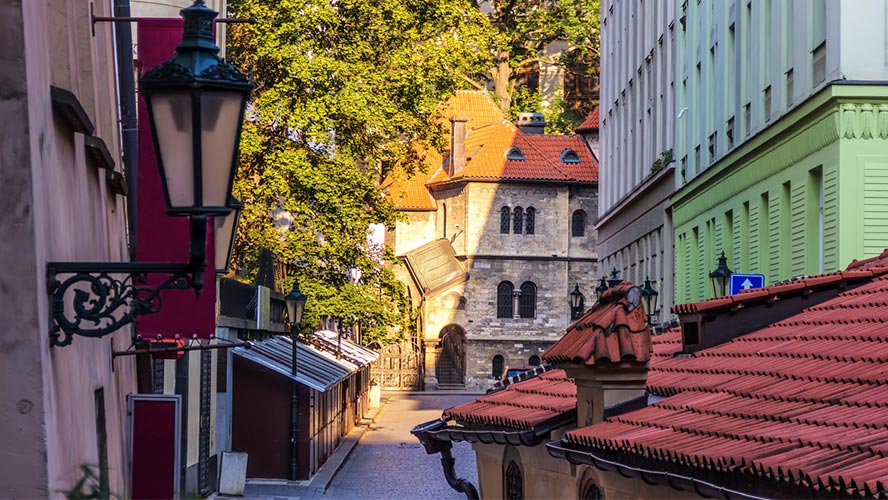
8. Wenceslaus Square, where it all happens
We have already mentioned this nerve centre of the Old Town, and now we turn to the most important square in the New Town, founded by Charles IV in 1348. It is almost impossible to avoid Wenceslaus Square when you are wandering around Prague, and you’ll recognise it because it is edged with historic buildings, banks, theatres, cinemas, hotels, and a great many shops. In the centre is the sculpture of St Wenceslaus mounted on a horse. The statue dates from 1912, and was the work of the artist J. V. Myslbek.
Wenceslaus Square is also home to something else that no visitor to Prague should miss: the National Museum.
If you visit the city in December, you can also see the picturesque market that is held here every year.
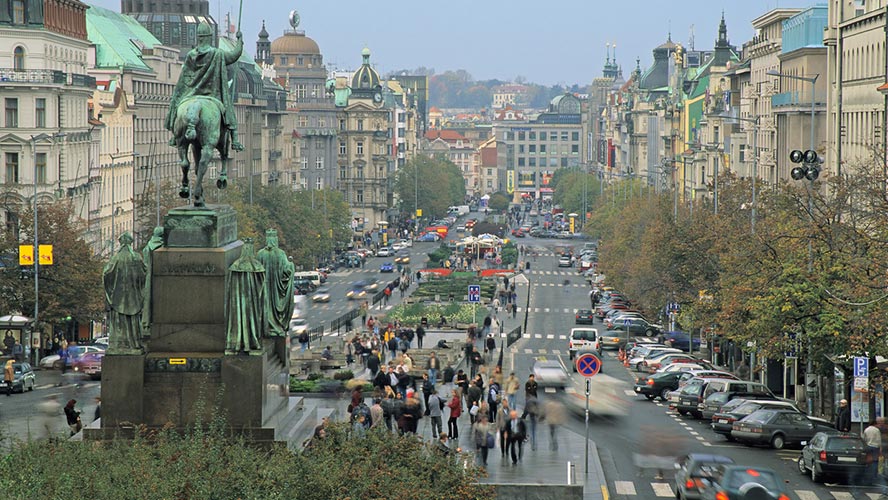
9. The Clementinum and its library
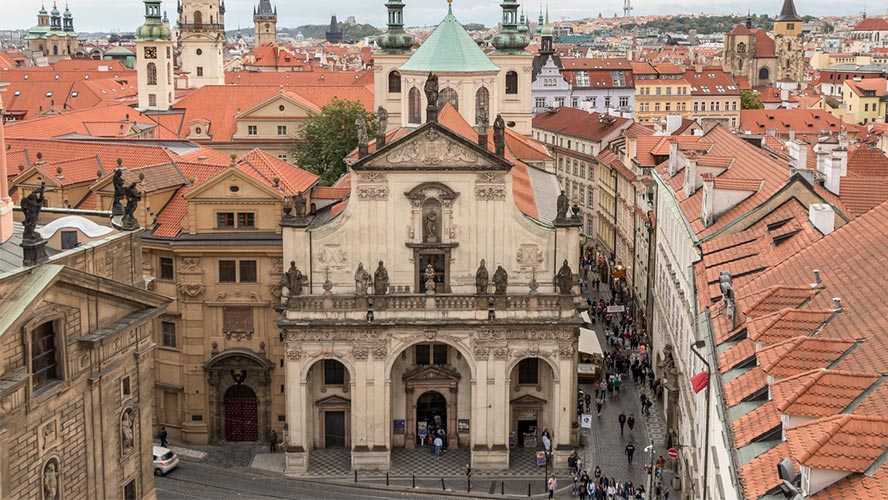
This complex, while not as large as Prague Castle, is nevertheless of an impressive size. It is situated in the Old Town, very near the Charles Bridge, so it’s easily reached on foot. The best plan is to tour the Clementinum, taking a close look, at least, at the Astronomical Tower (which, at 68 metres tall, affords attractive panoramic views); the Chapel of Mirrors, with its eighteenth-century organs, and of course the library. You will certainly have seen photographs of its endless rows of books on wooden shelves, its world globes and its frescoes.
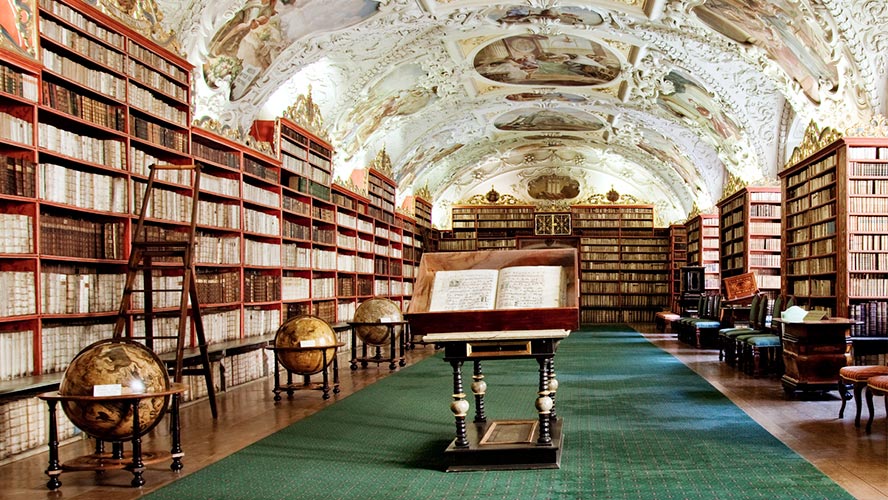
10. The Powder Tower, a royal entrance
Although Prague abounds in historic monuments, the Powder Tower still draws admiration from everyone who visits this city. It is one of Prague’s most important Late Gothic monuments, and it could be described as the entrance to the Old Town. All Czech kings passed through here on their way to be crowned. Since it was built in the fifteenth century, it has served many different purposes, including as an army gunpowder store.
If you have time, go up to the viewing point, 44 metres up (the tower itself is 65 metres tall), and enjoy the panoramic view of the magnificent historic quarter. The tower has a spiral staircase with 186 steps, but really is one of those monuments you ought to visit in Prague.
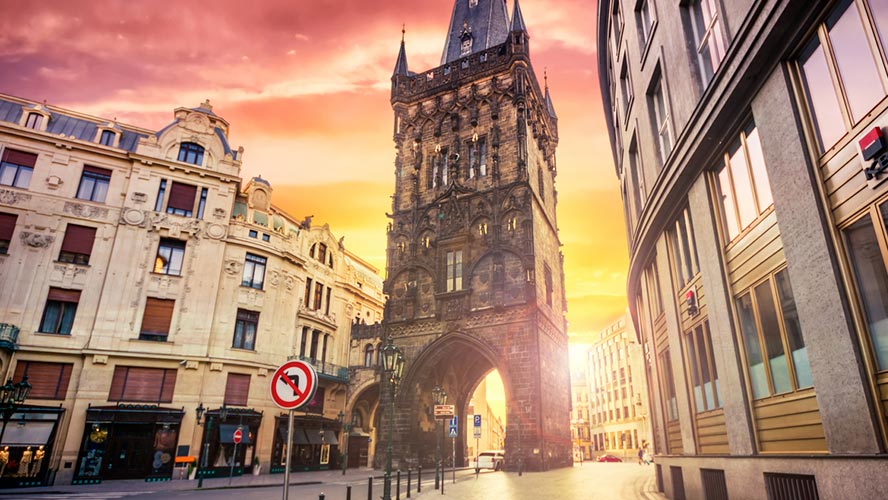
11. Petrin Hill, a green lung
An enormous park and an observation tower resembling the Eiffel Tower are the main attractions of Petrin Hill, and they’re quite impressive! This is one of the capital’s largest green spaces, and somewhere you can relax and switch off at any time of the day. You can travel to the top on a cable car.
On Petrin, you can go for a very enjoyable stroll through gardens such as Nebozízek or the Seminary Garden (with its two thousand or more fruit trees), and you can go up the tower to admire the views over Prague. And if you’re visiting with children, they will love the Labyrinth of Mirrors, a building with concave and convex mirrors where they’ll have great fun with the distorted reflections.
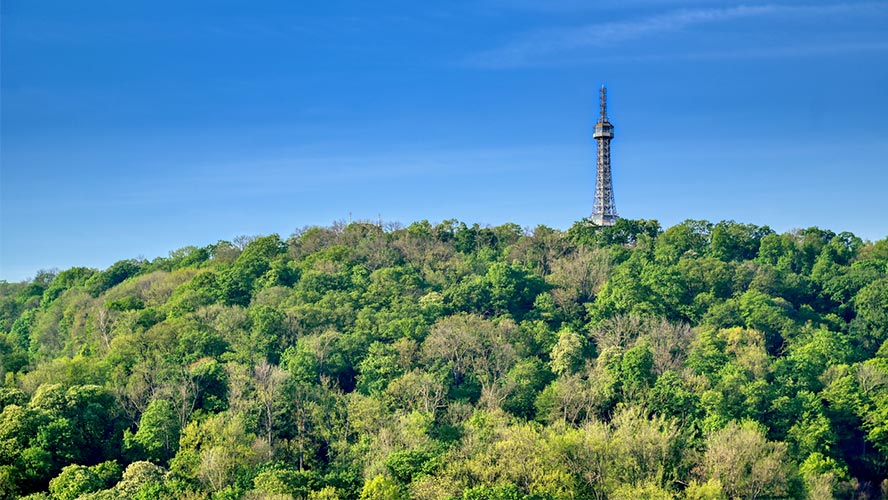
12. The artistic wealth of Strahov Monastery
Founded in the early twelfth century to house monks of the Order of the Premonstratensians, Strahov Monastery is a visit you should include on your itinerary if you are staying in Prague for longer than a weekend. Within this complex, you will find places of interest such as the Church of the Assumption of the Virgin Mary, dating from the eighteenth century, and a remarkable library with a rich collection of medieval manuscripts, world globes and maps. In the library’s Theology and Philosophy rooms, don’t miss the ceilings embellished with frescoes by Siard Nosecký and Anton Maulbertsch. Lastly, the Strahov art museum holds a fabulous collection of Gothic, Baroque and Rococo paintings.
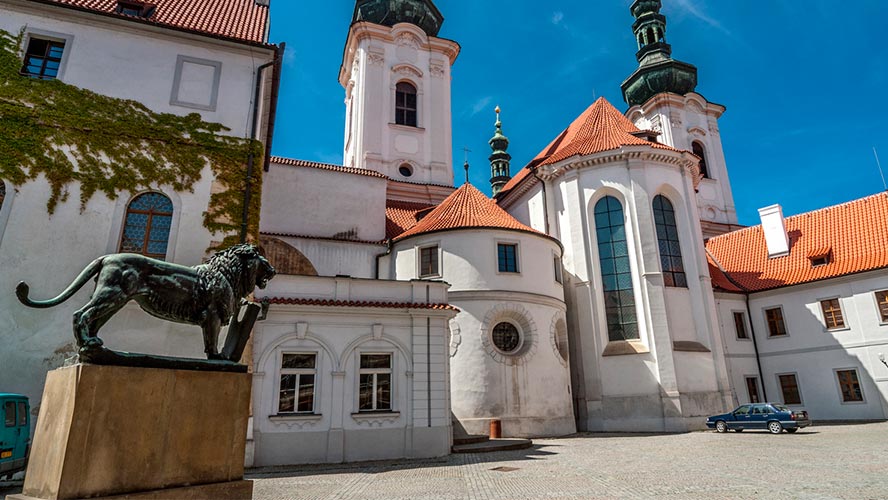
13. Kampa Island, the most romantic spot
Should anyone mention Kampa Island it will almost certainly be to recommend a romantic stroll. This little islet lies between the Moldava, the river that divides the city into two, and the narrow Certovka canal, where you can still see a water mill. To reach the islet, you will need to cross one of the bridges over the canal. Kampa is the perfect place if you want to chill for a while, or go for a picnic with friends, or visit the Kampa Museum, which houses the large collection amassed by Jan and Meda Mládek, important twentieth-century art collectors.
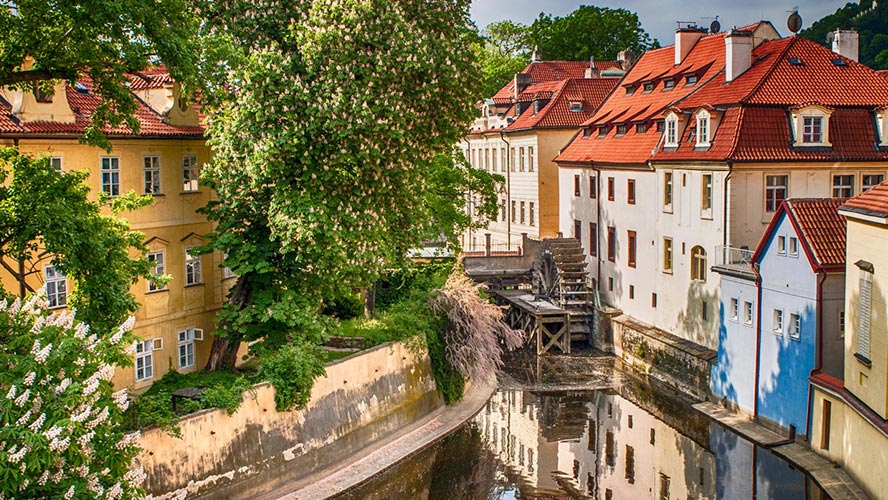
14. The John Lennon Wall
Prague has created its own tribute to the musical genius John Lennon, and only a few visitors to the city leave without having their photo taken in front of this multi-coloured wall. This project came about spontaneously after the singer’s death. Someone painted an image of his face on a wall of the garden of the Order of Malta, and people went on adding quotes, candles and calls for liberty. With the arrival of democracy, the demands ceased, and nowadays the wall, displaying works by over 30 artists from several countries, is one of Prague’s essential sights. If you want to write something, you can, because there is a space where you can add something with chalk or a felt-tipped pen.
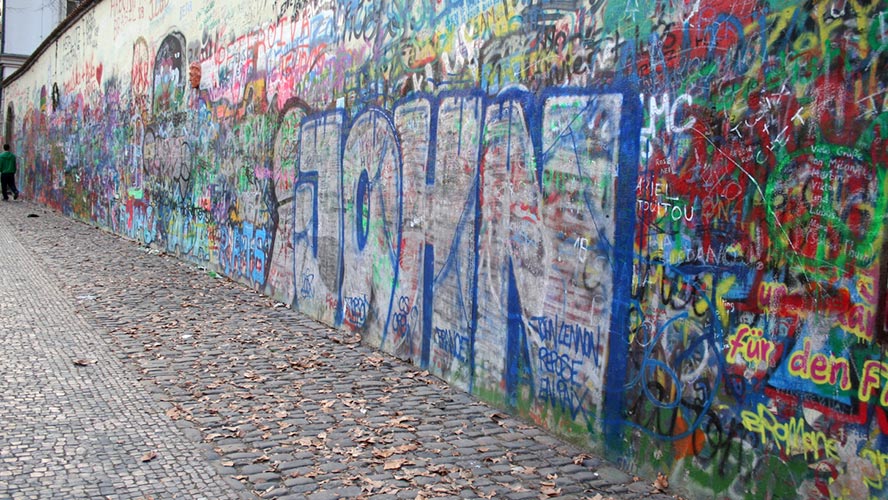
15. The sculptural Dancing House
Prague has some much-admired examples of modern art from the twentieth century. One of these is the so-called Dancing House, built in 1996 on the Rasin embankment, and designed by the architects Frank O. Gehry and Vlado Milunić. The structure’s strange silhouette is formed by two buildings that appear to be joined together in an embrace. It is said that the structure was inspired by the famous dancers Fred Astaire and Ginger Rogers. If you wish, you can go inside to eat in the restaurant and enjoy the 360° panorama (which includes the Prague Castle and the Malá Strana neighbourhood), or you can visit the art gallery.
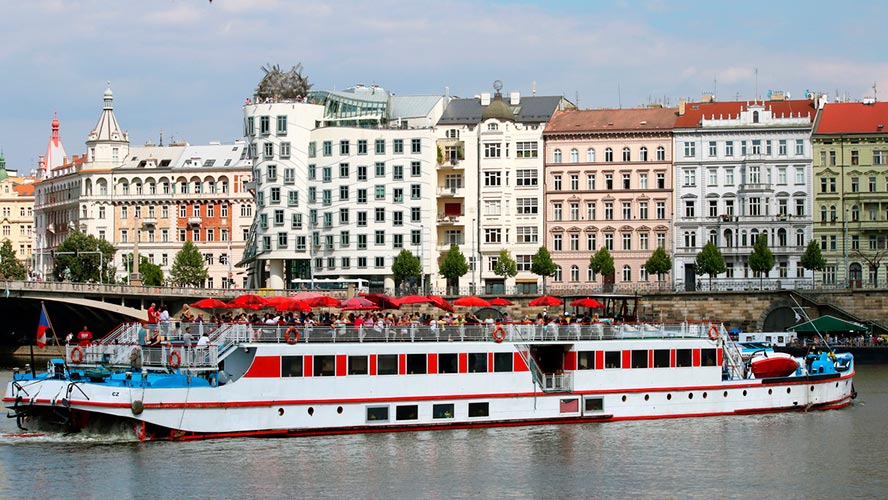
16. The Vrtba Garden, natural art
They say that effort brings reward, and although it isn’t easy to find, the Vrtbovská Garden is well worth seeking out. So that you know where to look, it is hidden on the side of Petrin Hill (very close to the Charles Bridge). It is an Italian-style Baroque garden which was designed by Jan Josef, the count of Vrtba, next to his palace in the early eighteenth century Although the palace itself has undergone modifications over the years, the garden has retained its original structure. Don’t miss the attractive sculptures, created by the renowned sculptor, Matyáš Bernard Braun. The garden’s great beauty and the views it offers of the city will make you want to linger here.
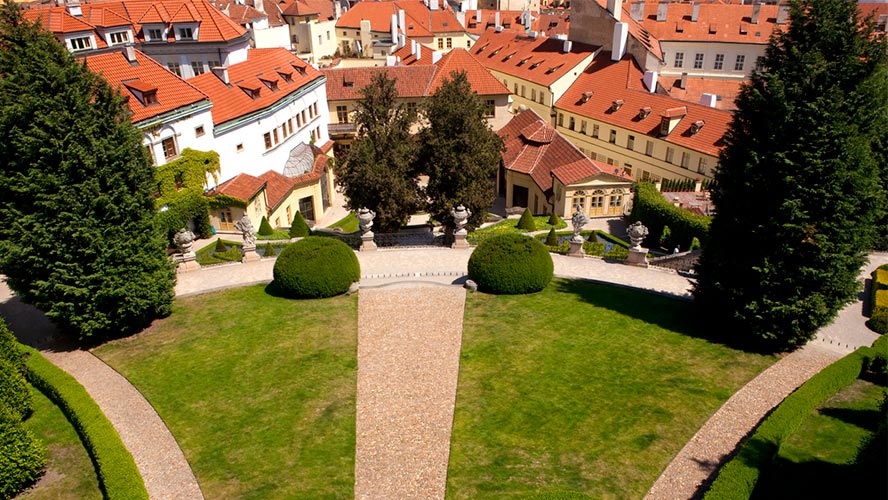
17. Vysehrad
Vysehrad could be considered the source of Prague itself, as this is the city’s oldest neighbourhood, and the site of a magnificent fortress on the banks of the river Moldava. The fortress dates from the second half of the eleventh century, and was once occupied by the Premislita princes. Its name means ‘castle on the heights’. This is one of the least-known districts of Prague, but it is well worth a visit. Apart from the fortress, there are other attractions nearby, including the Neo-gothic church of St Peter and St Paul; Vysehrad Park, one of Prague’s most famous green spaces, with its monuments and sculptures; and the nineteenth-century cemetery where many of the Czech Republic’s famous figures are laid to rest. According to legend, Vysehrad fortress is haunted by 34 ghosts.
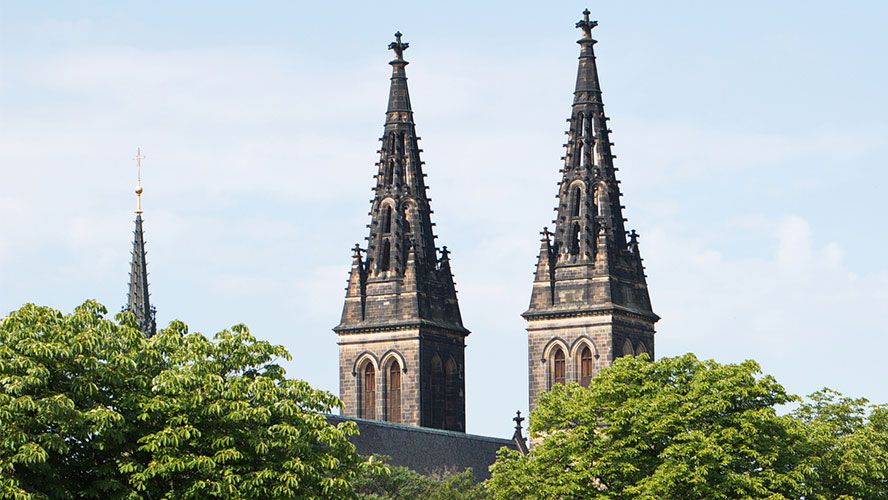
18. Karlstejn Castle
Located 32 kilometres from Prague, on top of a hill overlooking the town of Karlstejn, there stands a historical monument that enjoys extraordinary popularity with visitors. It is a medieval castle, built in the fourteenth century on the orders of the emperor Charles IV. The castle holds a very important place in the history of Prague, because it was here that the Crown Jewels were kept for 200 years. A guided visit shows you around rooms including the emperor Charles IV’s private apartments, the banqueting hall, the chapel of St Wenceslaus, the castle’s Great Tower with its medieval paintings, the armoury, and the prison. One of the castle’s most famous treasures is a copy of St Wenceslaus’ crown, which was always worn by the kings of Bohemia.
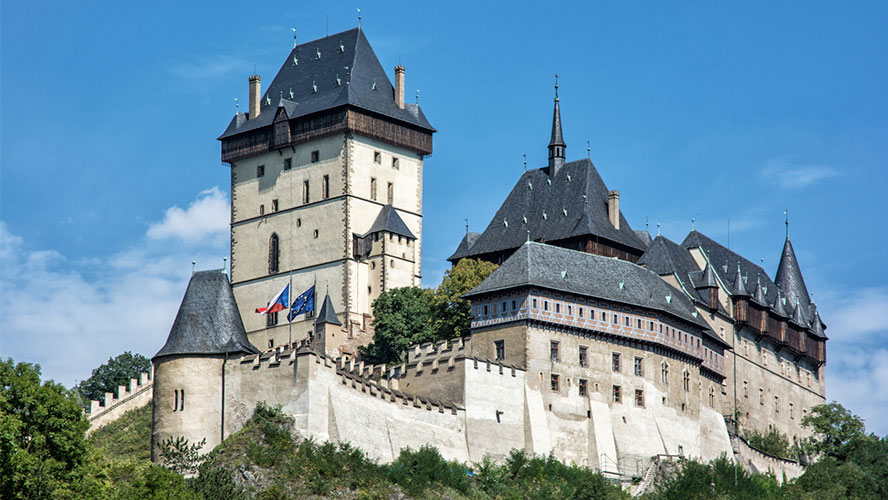
19. Prague’s Botanical Gardens
On the outskirts of the city lie Prague’s Botanical Gardens. The gardens cover 52 hectares, of which 30 are open to the public. These include the garden containing the historic St Clara Vineyard, the Japanese meditation garden, and the remarkable Fata Morgana winter greenhouse, which represents a tour of tropical vegetation through the seasons. The gardens stretch from Troja to the right-hand bank of the river Moldava. Here visitors can see over 10,000 different species of plants, both outdoors and inside the greenhouses. Moreover, you can have a glass of wine in the vineyard’s bodega.
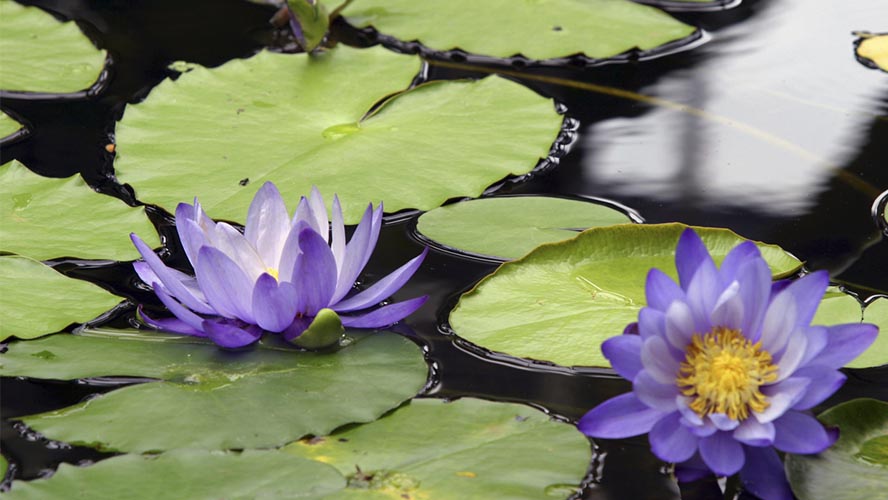
PRAGUE’S MUSEUMS, CULTURE FOR ALL
Every corner of Prague exudes culture: there are scores of museums, theatres, opera houses… it is impossible to resist the huge multitude of possibilities on offer every day. If you are interested in seeing a particular performance or show, try to book your tickets in advance. And if, by any chance, your stay coincides with one of the city’s music festivals, make sure you don’t miss it, because Prague achieves a high level of classical music, jazz, and so on — and these are the kinds of things that will make you feel like one of the locals.
20. National Museum
The museum’s architecture is so impressive that the building, along with its extensive collections, is considered a National Cultural Monument. The National Museum, located in Wenceslaus Square, is the Czech Republic’s most important museum, and it began its life in 1818, when it was known as the Patriotic Museum of Bohemia. The current Neo-Renaissance-style building was the work of the architect Josef Schulz, and was not completed until 1890.Its collections include elements from different subject areas ranging from the natural sciences to social sciences. They are organised thematically into rooms: Prehistory, Zoology, Paleontology, Minerals, etc. Set aside a full morning or afternoon to browse all the rooms at a leisurely pace.
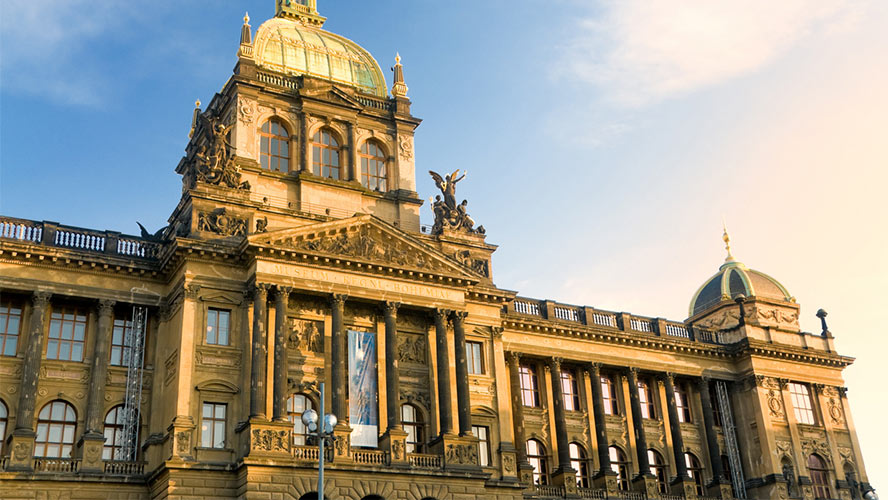
21. Franz Kafka Museum
This museum is a ‘must’ for admirers of the literary world of Franz Kafka, who will enjoy browsing through the first editions of his works, diaries, manuscripts, letters, and drawings. This exhibition was initially staged in Barcelona in 1999, and then moved to New York for 2002-2003. In 2005, it was installed in its current site in the old Herget brick factory.
Kafka was a native of Prague, and in the Kafka Museum he is studied in depth. The ‘Existential Space’ section is devoted to his life, while ‘Imaginary Topography’ focuses on his conception of reality and on his search for inspiration for his works. Innovative techniques help visitors to step into Kafka’s world. This is definitely a fascinating museum to visit in Prague.
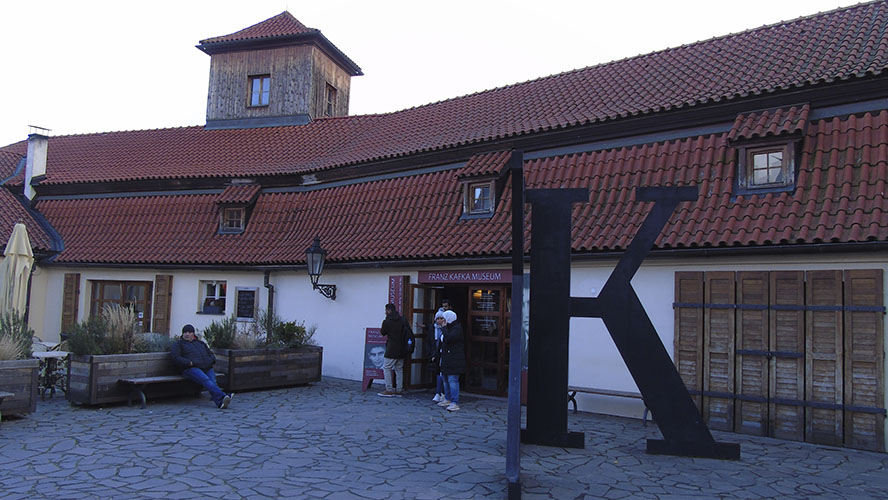
22. The Museum of Communism, memories of the past
If you like history, and you are interested in learning about the communist period in the Czech Republic, this is the museum for you. The Museum of Communism opened in 2001, and tells the story of the years when the country lived under Russian control (between 1948 and 1989), a period that came to an end with the Velvet Revolution. In the various rooms (Origins, The Dream of Communism, The Reality, etc.), there are displays of objects, furniture and documents from that time, and there are also audiovisual presentations.
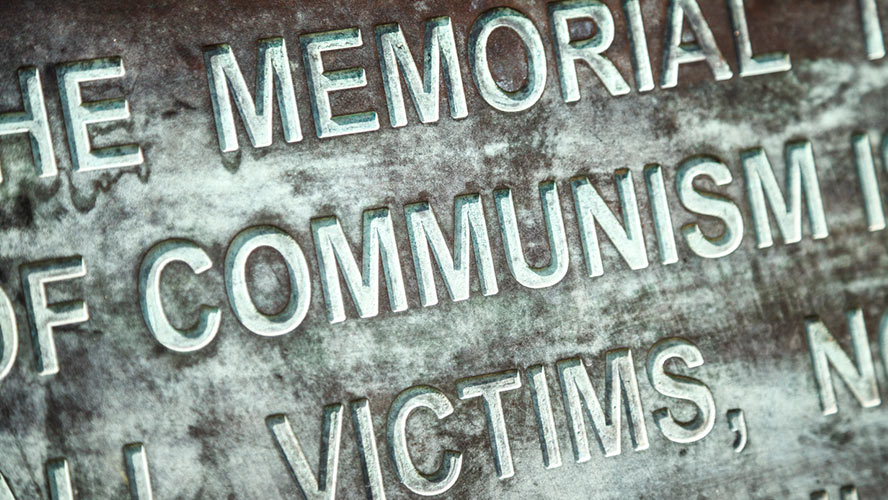
23. The Mucha Museum, the illustrator’s sensitivity
On your visit to Prague, take the opportunity to visit this museum, and admire a large part of the work of the Czech artist Alfons Mucha. You will certainly have already seen some of his posters from his time in Paris (1887 – 1904), with his exquisite illustrations of women, but here you can also see his sculptures, drawings and oil paintings. Also on display are the posters he designed in Bohemia between 1910 and 1939, and there is an interesting, 30-minute documentary film about his life and work. This is one of the places in Prague that you really must visit if you are at all interested in illustration.
Where to eat in Prague
As one of Europe’s most beautiful cities, Prague receives almost 10 million visitors every year. So, as one would expect, the city has plenty of restaurants, particularly in the historic quarter. We can offer some recommendations:
U Privrnce (Maiselova, 3). This is one of Prague’s most original restaurants, located in the Jewish Quarter. Its walls are plastered with graffiti and cartoons, and here, for a very reasonable price, you can eat a pork knuckle or a good meat dish accompanied by unfiltered beer. In addition, it has menus in several languages.
U Sadlu (Klimentska, 2). This is one of Prague’s best-known eateries, because of both the quality of its cooking and its reasonable prices. Its décor is medieval, and guests enter via a passageway and a flight of stairs.
Medvidkú (Na Perstynu, 7). This restaurant is famous for having made the beer with the highest alcohol content in the world, its X Beer 33, and for its beer-based dishes including beer bread, and meats cooked in beer. This establishment dates back to the Middle Ages, and still has centuries-old furniture and utensils. Try the pork knuckle.
Lokál Dlhouhááá (Dlouhá, 33). This is one of the trendiest eateries, especially popular with young people. It serves delicious, typical Czech cuisine in a very cosy room with domed ceilings. But be warned — at weekends it is very difficult to find a table.
V Zátisí (Liliová 216/1). This is a traditional restaurant where you can give yourself a real treat. It was named as the Best Restaurant in Central and Eastern Europe in 1996, and Best Restaurant in Prague in 2001. Its interior features paintings, a library and soft lighting. What can you eat here? Everything from Atlantic wolffish to venison, always accompanied by cabbage and other vegetables. The place is also famous for its cocktails.
Where to stay in Prague
Prague has a huge number of hotels, due to the enormous number of tourists that flood into the city. We can recommend three that will never disappoint. They are:
The Occidental Praha. This four-star hotel is situated next to the Conference Centre in the financial district, very close to tourist attractions including Prague Castle, Vysehrad and Wenceslaus Square. All rooms have state-of-the-art equipment to guarantee perfect rest, comfort and convenience. And guests can take advantage of the hotel’s excellent offer of cuisine to enjoy mouth-watering, traditional Czech cooking and delicious buffet breakfasts.
The Occidental Praha Five. Standing very close to Prague’s historic quarter, this hotel has 134 spacious, comfortable rooms, decorated in green and white. The restaurant offers a buffet breakfast as well as dinner, so that guests can enjoy the local cuisine. In addition, a menu of light meals is served in the lobby; enjoy them with a glass of the finest Czech beer.
The Occidental Praha Wilson. This 5-star establishment is in the heart of Prague, next to Wenceslaus Square, and is an ideal city hotel for families, couples, or groups of friends. It has 53 large, cosy rooms, as well as magnificent views of the National Museum, the Castle, and the Prague State Opera House. In addition, the hotel has an airport transfer service.
At Barceló Experiences, you can continue your tour of Europe’s magical attractions by taking a look at our tourist guides to other essential destinations, including Milan, Rome, and Istanbul.




































































